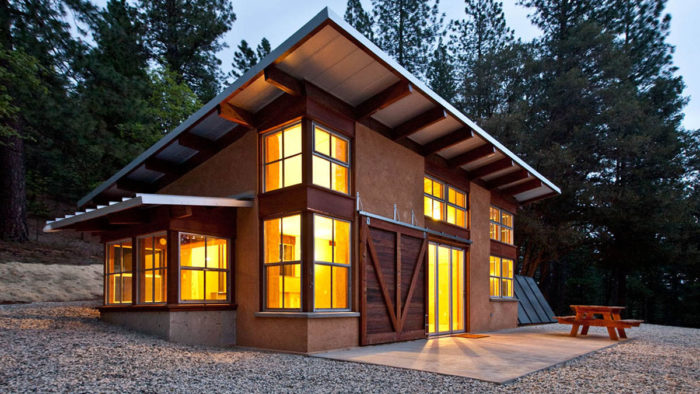Tips for Planning and Building a Green Home on A Budget

When it comes to building a sustainable green home, proper planning is the key. The good news? Building an energy-efficient ‘eco-home’ does not necessarily require that you spend a lot more than building a standard ‘code-built’ home. The amount you pay depends mostly on the design as well as the building materials you choose to use. I, Matthew Davies, suggest you do a lot of research before building an ‘eco-home’. In my experience, successfully building a sustainable home comes down to effective and proper project management. Even if you have skilled building professionals, they will need to be informed of how you want the job completed.
Below, you will find several of the steps I recommend in order to build your dream green home successfully.
Budget
No job should ever begin without a budget. Once you have decided on a budget, you will possibly need to save to be able to afford to pay everyone on time. The more money you have socked away, the better. You never know what kind of problems may pop up in the middle of a build. For instance, you may have planned to spend a certain amount on the bathtub. When it comes time to purchase or install the tub, you may find the manufacturer has raised their price, or additional work needs to be done to secure the tub in your home correctly. In either case, this could mean you will have to pay more than you had planned.
After you have decided on your budget, it is important not to stray too far from this number. Using the above scenario, you may be sad that you cannot get the tub you intended to have, but taking the time to find another one in your budget is essential. You will likely be stressed about making a decision, but going outside your budget should never be an option. If you do this too many times, you will quickly find yourself spending a lot more money than you wanted to.
Location
After nailing down your budget, your next logical step is to decide where to build your dream green home. Regulations vary from state to state and even from city to city. You want to find out what the rules are in the areas you are considering. The site of your home is such a key element and often overlooked by many looking to build a green home.
Once you have verified that you can build your dream home in the locality you desire, you have two essential things to consider before picking a plot of land in that area. The first is insolation or the amount of sun exposure the land receives all year long. If you have a location with little to no sunlight, you will have to make accommodations for other forms of energy generation. You will not be able to use solar panels in a shaded area. You could opt for wind or water, provided the location has a lot of wind or a body of water that moves fast enough to charge your batteries.
The second thing you need to consider is proximity. How far are you going to have to travel to get to work? How far is your new home going to be from a school? Will shopping at a store be a problem because you are in a very remote location? Living in a green house to reduce your carbon footprint becomes a wash if you have to travel long distances in your car, assuming you don’t already have an electric vehicle. Budgeting for travel time or a new car should be part of your budget that you originally had.
Architect
In all likelihood, you are not an architect. Therefore, you are going to need to find someone specializing in green homes. Going to a typical architect will not produce the results you desire. They know how to build a regular house. That is the extent of their knowledge.
As much as I believe that everyone deserves a chance, I would not take your plans to a person that has not been in the business for a while. A novice will not cut it. Don’t try to save money by going to an architect with the lowest prices. When you are shopping for quality products, you will rarely find yourself at Walmart. Why would you subject your dream home to the trials and tribulations of a person that is just offering the lowest prices? Sometimes when you want something done correctly, you have to pay a little more for it. This is one of those times.
Materials
Finally, you want to make sure that the contractor that is building your home is familiar with green building materials. There is no use in trying to build a green house with conventional materials. It will cancel out all the good you are trying to accomplish.
Much like choosing the right architect for the job, you are going to want to choose the right contractor. They should have experience in building with eco-friendly materials. Remember to advise them of your budget before they start pouring the foundation of your new home.
Conclusion
Green homes are becoming more and more popular. While the current trend is tiny homes, you can get the same results out of a regular house if you prepare and plan correctly. I, Matthew Davies, wish you all the best in the construction of your new home. Remember, start with a budget, move on to the location, then find a proper architect and contractor that will adhere to your plans. Follow these simple rules, and you will be living in the house of your dreams before you know it.